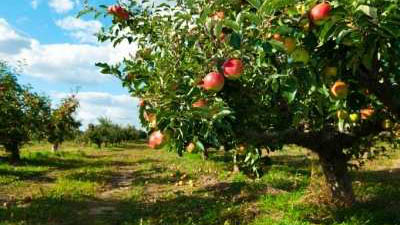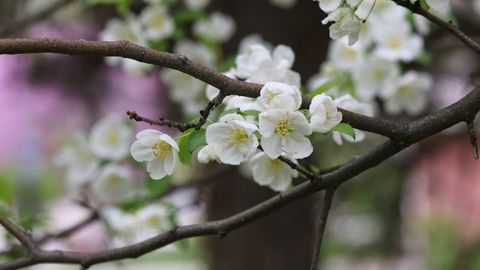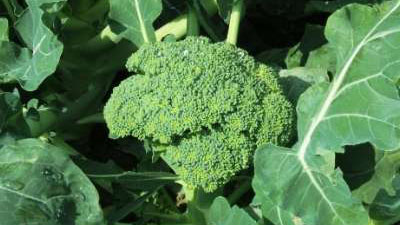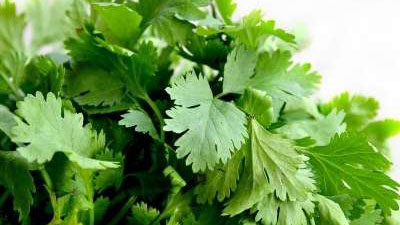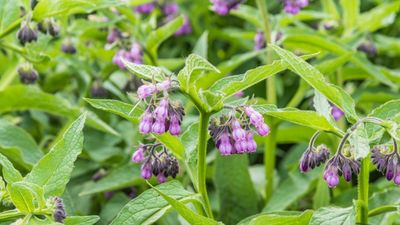How to Grow Watermelon in Your Garden
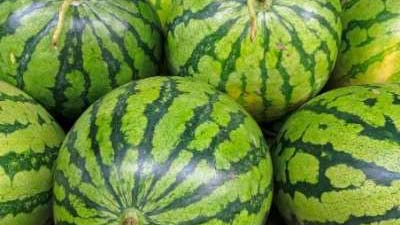
Summary
Watermelons grow best in sunny locations and in fertile, well-drained soils. Incorporate organic matter and a complete fertilizer into the area before planting. Plant 4-6 watermelon seeds directly in the garden when soils are 65°F. Seeds should be planted 1-2 inches deep, in mounds 4 feet apart. Thin the mounds after emergence to two plants. Transplant watermelon 2 feet apart through black plastic for early maturity. Use row covers or hot caps to protect the plants when planting before the frost-free period. After the vines develop runners, side dress with additional nitrogen fertilizer. Irrigation should be deep and infrequent. Plastic and organic mulches help conserve water and reduce weeding; however, do not apply organic mulches until soils have warmed to 75°F. Control insects and diseases throughout the year. Harvest watermelon when the tendril is dry, the ground spot is yellow, and skin is dull colored. Excellent varieties include Crimson Sweet, MickyLee, and Yellow Baby.
Watermelon Varieties
Crimson Sweet and Mirage Hybrid are large (15-25 lb.) red-fleshed melons. Mickylee and Minilee are smaller (10-15 lb.) icebox types. Golden Crown and Yellow Baby are yellow-fleshed varieties. There are many other good watermelon varieties for sale at local gardening outlets and through seed catalogs. Most grow well in Utah.
How to Grow Watermelon
Soil
Watermelons prefer organic, rich, well-drained, sandy soils for best growth. Most soils will grow watermelons provided they are well-drained.
Soil Preparation
Choose a site in your garden that receives full sun. Before planting, determine fertilizer needs with a soil test and then follow the recommendations given with the test report. If fertilizer applications are warranted, work the fertilizer into the top 6 inches of soil. If you fertilize with compost, apply no more than 1 inch of well-composted organic matter per 100 square feet of garden area.
Plants
Watermelon can be grown from seed or transplants. Seed should be planted 1-2 inches deep. Transplants should have 2-3 mature leaves and a well-developed root system. Allow 6 weeks to grow transplants. Transplants mature about 2 weeks before seeded melons and are recommended in short growing areas of Utah.
Planting and Spacing
Plant watermelon when soils are 65°F or after all frost danger has past. Plant 4-6 seeds in mounds 4 feet apart. After they have two leaves, thin to 2 plants per mound. Transplants should be planted 2 feet apart in the row with rows 4- 6 feet apart. Avoid damaging the roots when planting which slows establishment and growth.
Mulch
Black plastic mulch warms the soil, conserves water, and helps control weeds. Plastic mulches allow earlier planting and maturity, especially with transplants. After laying out the mulch, secure the edges with soil and cut holes for seeds or transplants. When using plastic mulches and row covers, seeds or plants can be set out 2-3 weeks before the last frost. Do not apply organic mulches (grass clippings, straw, newspapers, etc.) until soils are warmer than 75°F. Both plastic and organic mulches help conserve water and control weeds.
Row Covers
Row covers enhance growth and earliness. Hotcaps, plastic tunnels, fabric covers, and other devices help protect seedlings and transplants from cool air temperatures. Use a thermometer to help determine the temperature under row covers. Plants grown under row covers require ventilation when air temperatures exceed 80°F. Covers need to be removed when plants start to flower or when temperatures exceed 90°F. Remove covers when weather has stabilized.
Irrigation
Water watermelon deeply and infrequently, 1-2 inches per week. Use drip irrigation if possible. Mulch around the plants will help conserve soil moisture and reduce weed growth. Irrigate so that moisture goes deeply into the soil. Reduce watering amounts as the fruits ripen to improve flavor.
Fertilizer
After the vines develop runners, side dress each plant with 3-4 tablespoons of a nitrogen fertilizer (21-0-0), sprinkled around the plant, then water in the fertilizer.
Problems with Growing Watermelon
Weeds
Plastic and organic mulches effectively control weeds. Healthy vigorous vine growth by watermelon will also smother weeds.
Insects and Diseases
For more detailed information on insect and diseases visit the Utah Pests website.
| Insect | Identification | Control |
|---|---|---|
| Aphids | Green or black soft-bodies insects that feed on underside of leaves. Leaves become crinkled and curled. May transmit virus diseases. Secreted honeydew makes plants appear shiny, wet or sticky. | Use insecticidal soaps or strong water stream to dislodge insects. |
| Cucumber Beetles |
Adults have stripes or spots and feed on leaves and vines which reduces vigor. They transmit bacterial disease. Larvae bore into roots and stems causing plants to wilt and die. | Application of chemicals at first appearance is needed to control this pest. |
| Disease | Symptom | Contol |
|---|---|---|
| Powdery Mildew | Green or black soft-bodies insects that feed on underside of leaves. Leaves become crinkled and curled. May transmit virus diseases. Secreted honeydew makes plants appear shiny, wet or sticky. | Plant resistant varieties. |
| Wilt Diseases | Leaves wilt on one or more vines. Plants often die. Streaking, slime formation, or gummy exudates visible on stems. Diseases are caused by different pathogens | Identify causal disease. Treat disease as recommended once identified. |
| Virus | Leaves are light green, mottled, malformed, dwarfed and curled. Early infection affects fruit shape and flavor. An aphid transmitted disease. | Control aphids. Destroy severely infected plants. |
How to Harvest and Store Watermelon
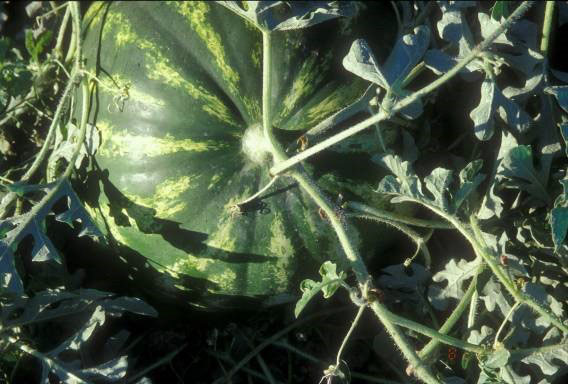
Watermelon fruits take 35-45 days to mature from flowering, depending on temperature and variety. Use the following guide to determine maturity. The curly tendril opposite the fruit should be brown and withered (Figure 1); the ground spot under the fruit changes from white to yellow; and the skin color changes from shiny to dull. Pick watermelons as they ripen. Watermelon will store for 1-2 weeks if held at 45-50°F.
Watermelon Productivity
Plant 3-4 watermelons per person for fresh use and an additional 3-4 plants for juicing or freezing. Expect 40 fruits per 100 feet of row.
Watermelon Nutrition Facts
Watermelons are mostly water. A two cup serving has 80 calories, is low in fat and is an excellent source of vitamin A and vitamin C.
Frequently Asked Questions
My watermelons are not very sweet or flavorful. Is the low sugar content caused by the watermelons crossing with other vine crops in the garden?
No. Although watermelon varieties cross with one another, the effect of this cross-pollination is not evident unless the seeds are saved and planted the following year. The poor flavor of your melons may result from wilting vines, high temperatures, or a short growing season in extreme northern areas.
What can I do to prevent my watermelons from developing poorly and rotting on the ends?
This condition is similar to blossom end rot of tomato and is caused by extremely dry weather when the melons were growing. It may be aggravated by continued deep hoeing, close cultivation or poor irrigation. Mulching the plants with black plastic film helps to reduce this problem.
Published April 2020
Utah State University Extension
Peer-reviewed fact sheet
Download PDF
Authors
Rick Heflebower and Dan Drost Vegetable Specialists
Related Research


